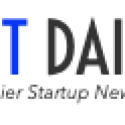Politics
12 Time Management Tips When Working in Different Time Zones
Published
1 year agoon
By
Drew Simpson
It can be challenging to keep track of time zones. Even though we’ve tried to reinvent time zones, we still can’t agree on a universal system.
However, it’s usually not a problem since everyone knows their region’s time zone. For example, the difference between East and West is three hours in the United States. Easy, right?
But what if you’re working with a remote team that’s spread all over the world?
When you have a colleague in Portugal and another in India, it’s harder to keep track of time. Additionally, team members can find it harder to collaborate in an asynchronous environment, and it can take a while for them to adjust. Moreover, scheduling meetings can be difficult, inconveniencing those who have to attend, especially early in the morning or late in the evening.
Suffice it to say, when working with teammates in different time zones, finding a good time for a meeting is a constant battle full of compromises.
However, from a business standpoint, it is hard to argue against operating across multiple time zones. In spite of the challenges, the upsides far outweigh the drawbacks. One advantage is that you can draw on a broader and more diverse pool of talent and skills. In addition, you can essentially operate round-the-clock.
You can, however, overcome these challenges with the right tools and approaches.
1. Immediately notify third parties of your location.
You should immediately let people know what time zone you live in. When introducing yourself, let your colleagues know your schedule and preferred communication channels. You can also use this opportunity to set boundaries. Give an example of a situation when you’re able to be contacted — even though you’re off-the-clock.
Having trouble communicating your schedule? Consider sharing your online calendar with your peers,
Or, you could drop your calendar link into your online profiles. Why? You can avoid misunderstandings by making your office hours visible in your email signature, work chat profile, LinkedIn account, and Google profile.
Also, don’t forget to update them whenever necessary. You are responsible for sharing any changes in your schedule, whether you are switching shifts or clocking out early.
2. Clearly communicate time zone boundaries.
You need to help your people communicate clearly their preferred work hours and set boundaries with the teams they work with, regardless of whether they’re located outside of your main office or working on a hybrid team. A shared team calendar might be helpful as everyone can see each other’s availability.
It is equally important for managers to schedule meetings within their teams’ working hours. Be sure that your entire team is able to find times that work for all of them. Make sure you don’t let your dispersed team members hop on a call at 7 am just because it’s convenient for you.
For improved transparency and better coordination, use a tool that lets team members share their work calendars. The best way to close any cultural communication gaps is to facilitate an open discussion about working hours and expectations. Encourage your employees to block off time for lunch breaks and refrain from checking work emails or Slack messages outside of business hours.
3. Decide on a fair time for meetings.
When working across time zones, it is important to set fair meeting times. After all, no one wants to get up at 5 a.m. for a check-in or stay up late for a meeting at 10 p.m. if it’s outside of their normal working hours.
In short, make sure you take everyone’s time zone into account when setting meeting times. What if there isn’t a way to make meeting times fair for everyone? In order to avoid inconveniencing the same people repeatedly, you may want to rotate the start time.
4. Understanding the difference between synchronous and asynchronous communication.
Sync and async communication are important to understand when working with a distributed team.
The process of synchronized communication (“sync”) allows colleagues to respond and provide feedback in real-time. You can do this via phone calls, video chats, or even using an instant messaging platform like Slack or Microsoft Teams.
Async communication, on the other hand, refers to sending information at different times and delaying the delivery. Examples would be sending an email or leaving a voice message for them to respond to whenever it’s convenient for them.
Take advantage of async whenever possible.
Whenever possible, it’s important to develop the ability to communicate asynchronously when working remotely. No matter where your whole team is located and what time zone or geography separates you, effective async communication allows you to stay connected effectively.
Tips for async communication:
- Every request should begin with what you need and why you need it. By being upfront, others will know what type of commitment you expect.
- Send a Loom video instead of a meeting to discuss information and solicit feedback. When responding, people can send it in text format or by uploading their own Loom video.
- Invite people to comment and collaborate on documents such as Google Docs.
- You can schedule in-person meetings using meeting scheduling software or something like Doodle to find the best time for everyone.
5. Consider split shifts or workdays that accommodate different time zones.
Suppose you work in one country but half your team is located in another. Consider working a half-day at the office and then working remotely one or more days a week at night or early in the morning. Often called split shifts, this involves working part of the day during your time zone, then working part of the day during the time zone of another team.
With a split schedule, you can be more available for meetings with colleagues in different time zones without ignoring your local team. Furthermore, you will be able to stay in touch with your international department without staying up all night.
What if you work in two time zones that don’t intersect much? Rather than working the same number of hours consecutively, split your shift into two.
As an alternative, you may decide to work on another international team’s schedule for a few days each week. For example, you could work on days that are convenient for European, Middle Eastern, and African regions (EMEA). As such, you begin work at 6 a.m. However, you would be done by 3 p.m. Simply book a full-day event with the title “EMEA hours: 6 a.m. to 3 p.m. EST” in order to avoid being booked by people in your time zone.
6. Specify dates and times clearly.
If there are different time zones represented within the discussion, try to be as precise as possible regarding times and dates. When referring to a specific time, everyone reading your message needs to be aware of it.
As an example, asking, “can we meet next Wednesday at 11 a.m. your time?” is not as good as asking, “can we meet next Wednesday at 11 a.m. EST time?”
For everyone to understand the different times, use a simple timezone converter tool.
Make sure not to mix up AM and PM times or use roman numerals when writing in a foreign language. Despite sounding like a small detail, this can cause confusion and unnecessary stress.
Bonus tip: Decide which time zone to use.
Even though you should still be aware of the time zones of others, setting one official time zone for your company can help reduce misunderstandings.
Meetings can be set up according to each manager’s personal time zone, leaving everyone scrambling to come up with their own time zone. Having an official time zone means everyone will set and communicate deadlines and meetings using the same time zone, regardless of their location. By doing this, employees can quickly determine the time difference between their location and their office.
7. Set up internal wikis.
Real-time information and context shouldn’t be limited to one-off videos and screen captures. Notion, Confluence, and even Google Drive can all be used to document best practices and processes on an internal wiki.
Documentation isn’t the only thing you can do with wikis. Using them is also an effective way to share meeting notes, create consensus and gather feedback. As a result of creating a wiki, you’ll be able to create transparency and stimulate a continuous flow of ideas and feedback.
8. Use an online calendar.
It is common to waste a lot of time waiting for confirmation when booking appointments or meetings with remote team members..A time zone difference makes it even more difficult to get a real-time response. You will likely not hear from the other parties until the next business day if they live on the other side of the world. An email exchange might even take a week to nail down an appointment.
Thankfully, tools like Google Calendar and Calendar solve this problem.
Take Calendar, for example.
Calendar searches the open time slots in your connected calendars when you need to schedule a meeting. Adding or removing times and selecting meeting length are customizable options. It is also possible to include meeting location options like a physical address, phone number, or Zoom link.
Your availability can be emailed to meeting attendees once you’ve made your preferences. By clicking on a time, they can reserve it, and Calendar will add it to your calendar and email the meeting attendees.
9. Avoid micromanagement and set appropriate expectations.
Reconfiguring expectations around work means working across time zones as well. Your employees may not be able to get immediate responses to their requests due to the time difference. To help remote colleagues feel respected, they should determine the urgency of a task before sending instant messages or emails. By doing that, they will feel more appreciated at work, less stressed, and more satisfied.
Another great way for people to stay in touch with colleagues is to schedule emails or instant messages to arrive during work hours. Messages can be scheduled in advance on many communication platforms if they need to be sent before or after work hours.
Provide these tools to your employees so they can use them effectively. As a result, you’ll be able to close any cultural communication gaps, which will lead to a more respectful and productive work environment.
10. Be aware of cultural norms.
It’s important to understand the cultural norms and traditions of the countries in which your company has remote workers. They may work different hours, celebrate different holidays, or communicate differently due to these cultural differences.
In order to create a cohesive team, it is important to demonstrate an understanding of cultural differences.
11. Be patient if you need to send an unscheduled message.
Emails and messages shouldn’t be sent right when colleagues are waking up or going to bed in different time zones. As a result, many global employees will snooze their instant message notifications when they have finished working or turn off their work devices when they are done working.
Requiring that your teammates are always available does not create a good company culture and might hurt morale. You can avoid this by minimizing your messaging after hours and being patient if you don’t get an immediate answer. It is likely that a truly great teammate will contact you when they start to work the next day.
12. Have fun with face time.
Coordinating across time zones can be challenging. However, it is well worth taking the time to have fun as well as talk about work.
Relationships foster trust, increase collaboration and boost productivity in any work environment. For remote teams, though, this is especially important. Having a social relationship with colleagues does more than just combat isolation. Furthermore, it reduces barriers to asking questions, getting help, and taking risks.
Take time to grab virtual coffees with your teammates one-on-one or in small groups, and schedule online game nights for the entire team. Consider providing a dial-in option for events like a holiday party or quarterly social if your team is partially remote. It’s even possible to take your Meeting Owl to happy hour if you wish.
In either case, make sure your remote employees receive a special treat, such as cookies. You can also give them a budget to buy their own refreshments, so they feel like they’re a part of the party.
Published First on Calendar. Read Here.
Featured Image Credit: Cottonbro Studio; Pexels; Thank you!
Calendar
We are Calendar, trying to make the world a much more productive place. Check us out online at https://www.calendar.com.
You may like
-


How carbon removal technology is like a time machine
-


Climate tech is back—and this time, it can’t afford to fail
-


Return to the Office: Trends and Tips to Make You a Success
-


3 Travel Tips for the Female Executive Traveling Solo
-


How AI is Changing Data Management: Embracing the AI-Driven Automation Era
-


Scheduling Time on Your Calendar to Disconnect From Work
Politics
Fintech Kennek raises $12.5M seed round to digitize lending
Published
7 months agoon
10/11/2023By
Drew Simpson
London-based fintech startup Kennek has raised $12.5 million in seed funding to expand its lending operating system.
According to an Oct. 10 tech.eu report, the round was led by HV Capital and included participation from Dutch Founders Fund, AlbionVC, FFVC, Plug & Play Ventures, and Syndicate One. Kennek offers software-as-a-service tools to help non-bank lenders streamline their operations using open banking, open finance, and payments.
The platform aims to automate time-consuming manual tasks and consolidate fragmented data to simplify lending. Xavier De Pauw, founder of Kennek said:
“Until kennek, lenders had to devote countless hours to menial operational tasks and deal with jumbled and hard-coded data – which makes every other part of lending a headache. As former lenders ourselves, we lived and breathed these frustrations, and built kennek to make them a thing of the past.”
The company said the latest funding round was oversubscribed and closed quickly despite the challenging fundraising environment. The new capital will be used to expand Kennek’s engineering team and strengthen its market position in the UK while exploring expansion into other European markets. Barbod Namini, Partner at lead investor HV Capital, commented on the investment:
“Kennek has developed an ambitious and genuinely unique proposition which we think can be the foundation of the entire alternative lending space. […] It is a complicated market and a solution that brings together all information and stakeholders onto a single platform is highly compelling for both lenders & the ecosystem as a whole.”
The fintech lending space has grown rapidly in recent years, but many lenders still rely on legacy systems and manual processes that limit efficiency and scalability. Kennek aims to leverage open banking and data integration to provide lenders with a more streamlined, automated lending experience.
The seed funding will allow the London-based startup to continue developing its platform and expanding its team to meet demand from non-bank lenders looking to digitize operations. Kennek’s focus on the UK and Europe also comes amid rising adoption of open banking and open finance in the regions.
Featured Image Credit: Photo from Kennek.io; Thank you!
Radek Zielinski
Radek Zielinski is an experienced technology and financial journalist with a passion for cybersecurity and futurology.
Politics
Fortune 500’s race for generative AI breakthroughs
Published
7 months agoon
10/11/2023By
Drew Simpson
As excitement around generative AI grows, Fortune 500 companies, including Goldman Sachs, are carefully examining the possible applications of this technology. A recent survey of U.S. executives indicated that 60% believe generative AI will substantially impact their businesses in the long term. However, they anticipate a one to two-year timeframe before implementing their initial solutions. This optimism stems from the potential of generative AI to revolutionize various aspects of businesses, from enhancing customer experiences to optimizing internal processes. In the short term, companies will likely focus on pilot projects and experimentation, gradually integrating generative AI into their operations as they witness its positive influence on efficiency and profitability.
Goldman Sachs’ Cautious Approach to Implementing Generative AI
In a recent interview, Goldman Sachs CIO Marco Argenti revealed that the firm has not yet implemented any generative AI use cases. Instead, the company focuses on experimentation and setting high standards before adopting the technology. Argenti recognized the desire for outcomes in areas like developer and operational efficiency but emphasized ensuring precision before putting experimental AI use cases into production.
According to Argenti, striking the right balance between driving innovation and maintaining accuracy is crucial for successfully integrating generative AI within the firm. Goldman Sachs intends to continue exploring this emerging technology’s potential benefits and applications while diligently assessing risks to ensure it meets the company’s stringent quality standards.
One possible application for Goldman Sachs is in software development, where the company has observed a 20-40% productivity increase during its trials. The goal is for 1,000 developers to utilize generative AI tools by year’s end. However, Argenti emphasized that a well-defined expectation of return on investment is necessary before fully integrating generative AI into production.
To achieve this, the company plans to implement a systematic and strategic approach to adopting generative AI, ensuring that it complements and enhances the skills of its developers. Additionally, Goldman Sachs intends to evaluate the long-term impact of generative AI on their software development processes and the overall quality of the applications being developed.
Goldman Sachs’ approach to AI implementation goes beyond merely executing models. The firm has created a platform encompassing technical, legal, and compliance assessments to filter out improper content and keep track of all interactions. This comprehensive system ensures seamless integration of artificial intelligence in operations while adhering to regulatory standards and maintaining client confidentiality. Moreover, the platform continuously improves and adapts its algorithms, allowing Goldman Sachs to stay at the forefront of technology and offer its clients the most efficient and secure services.
Featured Image Credit: Photo by Google DeepMind; Pexels; Thank you!
Deanna Ritchie
Managing Editor at ReadWrite
Deanna is the Managing Editor at ReadWrite. Previously she worked as the Editor in Chief for Startup Grind and has over 20+ years of experience in content management and content development.
Politics
UK seizes web3 opportunity simplifying crypto regulations
Published
7 months agoon
10/10/2023By
Drew Simpson
As Web3 companies increasingly consider leaving the United States due to regulatory ambiguity, the United Kingdom must simplify its cryptocurrency regulations to attract these businesses. The conservative think tank Policy Exchange recently released a report detailing ten suggestions for improving Web3 regulation in the country. Among the recommendations are reducing liability for token holders in decentralized autonomous organizations (DAOs) and encouraging the Financial Conduct Authority (FCA) to adopt alternative Know Your Customer (KYC) methodologies, such as digital identities and blockchain analytics tools. These suggestions aim to position the UK as a hub for Web3 innovation and attract blockchain-based businesses looking for a more conducive regulatory environment.
Streamlining Cryptocurrency Regulations for Innovation
To make it easier for emerging Web3 companies to navigate existing legal frameworks and contribute to the UK’s digital economy growth, the government must streamline cryptocurrency regulations and adopt forward-looking approaches. By making the regulatory landscape clear and straightforward, the UK can create an environment that fosters innovation, growth, and competitiveness in the global fintech industry.
The Policy Exchange report also recommends not weakening self-hosted wallets or treating proof-of-stake (PoS) services as financial services. This approach aims to protect the fundamental principles of decentralization and user autonomy while strongly emphasizing security and regulatory compliance. By doing so, the UK can nurture an environment that encourages innovation and the continued growth of blockchain technology.
Despite recent strict measures by UK authorities, such as His Majesty’s Treasury and the FCA, toward the digital assets sector, the proposed changes in the Policy Exchange report strive to make the UK a more attractive location for Web3 enterprises. By adopting these suggestions, the UK can demonstrate its commitment to fostering innovation in the rapidly evolving blockchain and cryptocurrency industries while ensuring a robust and transparent regulatory environment.
The ongoing uncertainty surrounding cryptocurrency regulations in various countries has prompted Web3 companies to explore alternative jurisdictions with more precise legal frameworks. As the United States grapples with regulatory ambiguity, the United Kingdom can position itself as a hub for Web3 innovation by simplifying and streamlining its cryptocurrency regulations.
Featured Image Credit: Photo by Jonathan Borba; Pexels; Thank you!
Deanna Ritchie
Managing Editor at ReadWrite
Deanna is the Managing Editor at ReadWrite. Previously she worked as the Editor in Chief for Startup Grind and has over 20+ years of experience in content management and content development.
